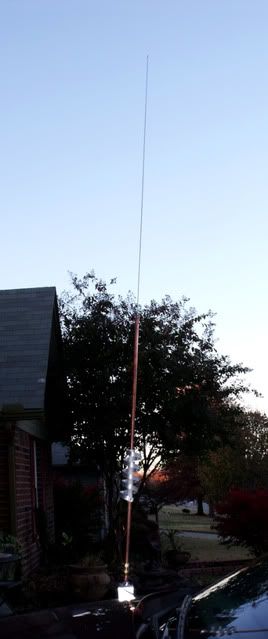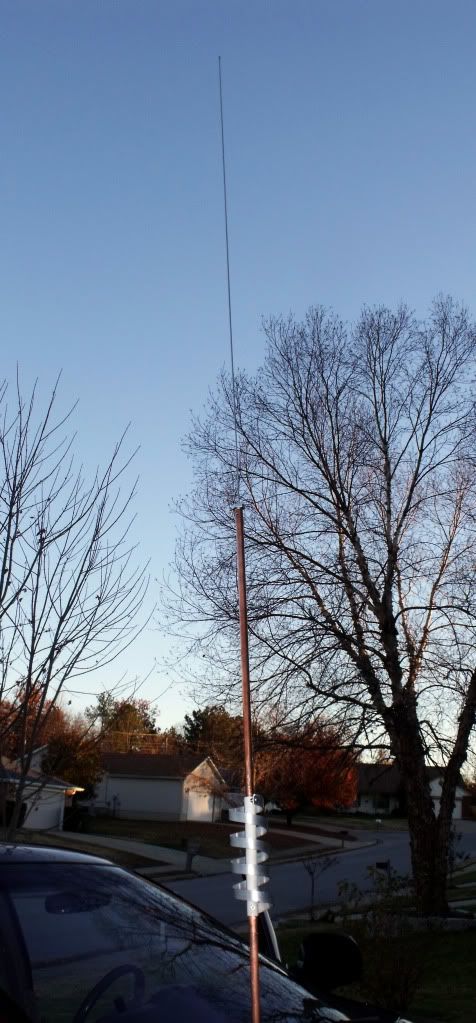HomerBB,
I think you'll find that by increasing the diameter of that loading coil you can decrease it's height with no change in the amount if inductance produced. (That's absolutely normal with coils.) Just reducing the height of the coil isn't going to shorten the antenna much, inches maybe. But, if you also add turns to that coil while increasing it's diameter, you increase the amount of inductance that coil provides. That can be manipulated to shorten the overall height/length of the antenna quite a bit. It's also a fact that shorter-n-wider coils are more efficient that tall skinny ones. so that's another factor you can 'blend' into the 'mix'.
The size and shape of the conductor that makes up that coil does affect the total inductance produced by the coil, but it honestly doesn't play that much importance in things. The size of the conductor affects the current carrying ability (resistive losses) of a coil. Small conductors just aren't going to carry as much current as larger conductors, and that will directly affect the amount of power handling ability of the coil. There's lots of 'wiggle' room in that! Nothing wrong with using larger conductors, but there's a point where 'over-kill' get's to be a little ridiculous. It doesn't contribute any practical electrical benefit, but it can contribute to the mechanical benefit of the antenna, it's usually stronger. The 'shape' of that conductor making up the coil just isn't a big deal at all. It can make -some- differences, but nothing significant. It can certainly change the appearance of the antenna, and if that's important to you, then it can 'improve' things in that regard.
Copper, aluminum, steel, cast iron, whatever, are all conductors and can be used to make an antenna. The biggy is the strength and flexibility of those conductors when they are subjected to stress. Copper just isn't the strongest or most flexible stuff around. That's one reason why it isn't used for mobile antennas that are subject to lots of stress, or hitting things, it doesn't recover from those 'hit's so good. Sure, there are differences in different metal's conductivity, but those differences are negligible for practical purposes.
And one thing that is very important that isn't a really commonly thought about thingy is the insulation used with antennas. Those insulators have to withstand the power being used, and are really more important than the size/shape of the conductors used in that antenna. If that insulator is also used to support things (at the base of the antenna or inside that loading coil) then it also has to be pretty strong. That will certainly narrow the field and increase the cost of things! The 'best' insulation material depends on how it's used, what forces it's subjected to. The 'best' insulation material I can think of is 'Delrin'. But you had better sit down before checking prices!! That stuff can be machined just like metals, is at least as strong as anything else I can think of, and works just dandy. But mercy! It's expensive. Probably the one reason why you don't see it used very much.
Lots of things go into the design of an antenna. Just when you think you've got a really good one, you find one more thingy that could be improved. @#$, just like females...
- 'Doc
(There's nothing 'new' in any of that, same old thing that's been around forever almost.)




